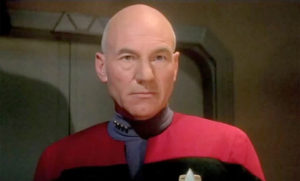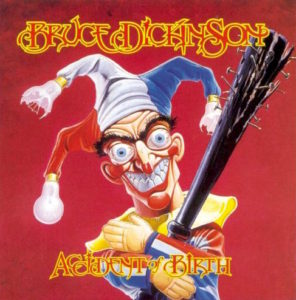NOTE: This Dharma talk was given by Ven. Charama on November 20th, 2016.
Title: “2 of 4”
 No, the title isn’t a reference to another human/Borg hybrid like Seven of Nine on Star Trek: Voyager.
No, the title isn’t a reference to another human/Borg hybrid like Seven of Nine on Star Trek: Voyager.
Today’s Dharma talk is about the Four Noble Truths, specifically one that I believe is often overlooked – even by long-time practitioners: the Second Noble Truth (2 of 4 – get it?), which reveals the cause of the suffering.
I think it’s safe to say that we have the First Noble Truth down pat: “Life is dukkha,” which is usually translated as suffering – although you could insert any synonymous adjective for dukkha: suffering, dis-ease, unsatisfactoriness, unhappiness, pain, distress, despair, etc.
Before I gave this message I was reminded that a better translation of “Life is suffering” is “There is suffering in life.” The idea is that suffering is optional and doesn’t come to everyone, especially the enlightened. Although that’s theoretically true, as a Zen practitioner I don’t think any of us will avoid suffering until we die.
Anyway, so widespread is the phrase rightly or wrongly known as “Life is suffering” that even non-Buddhists are aware of it. People may not always agree with the phrase or its precise meaning, but they get it. They suffer. They can see others suffering. So they understand it.
I’ve read comments here in the past couple of weeks that pooh-pooh practitioners who assess the current unrest in America by saying, “Life is suffering.” In fact, it seems to have become de rigueur among some to proclaim the phrase shallow, dismissive…even submissive. The rationale goes something like this: “Life is suffering” doesn’t explain what’s happening politically, and certainly doesn’t allow for the condoning of it – or the lack of action against it.
But are the practitioners who look around and say, “Life is suffering” really the misinformed noobs some think?
I don’t believe so, no.
I think they’re being insightful…and issuing a challenge to all of us.
The First Noble Truth merely (but profoundly) states the problem: “Life is dukkha.”
That’s vitally important.
But it is the Second Noble Truth that reveals why: Samudaya. Or “dukkha is caused by craving.”
The explanation for the Second Noble Truth is that we crave that which we do not have. We grasp. We want. This includes (most especially) a craving to satisfy the senses. We want our lives/circumstances to be different from how they are. Or, we want our lives/circumstances to stay the same. Or we want to make others do something other than what they’re doing. Whatever it is we want, it is often contrary to that which is.
This craving inevitably leads to attachments. We want this. We want that. We fixate on things…or people…or ideas. We absolutely must-have-or-we’ll-die this candidate. Or that one. Or, we cannot-survive-if-this-candidate-is-elected. Or that one. Take your pick.
Once we’ve cemented that attachment, and it doesn’t come to pass (we don’t get what we want), dukkha arises. That dukkha fuels the unsatisfactoriness/unhappiness of the First Noble Truth…which leads us to do things that accrue karma found in the Second Noble Truth.
The Second Noble Truth is, fundamentally, about karma – our actions here and now, as well as the accruing of karma from actions in the past…and those (through wholesome or unwholesome intentions) we plan to take in the future. In short, the suffering around us every day is the result of karma being played out – our own as well as that of others.
In other words, we live in the world we have created for ourselves.
It’s a simple process, frankly. We attach to outcomes, we suffer. In our anger (suffering), we cause others to suffer. And the karma really ramps up when we convince others to join us in our suffering. The cumulative effect of all that suffering results in our world.
 The result is like the episode “Cause and Effect” from Season Five, Episode 18 of Star Trek: The Next Generation. It’s one of my favorite episodes because it’s about time travel. I love time travel. In this episode the crew of the Enterprise is caught in a “causal time loop” that dooms them to repeat the same actions that always end with Captain Picard shouting, “All hands abandon ship! All hands aban -” Then…BOOM! The Enterprise blows to smithereens.
The result is like the episode “Cause and Effect” from Season Five, Episode 18 of Star Trek: The Next Generation. It’s one of my favorite episodes because it’s about time travel. I love time travel. In this episode the crew of the Enterprise is caught in a “causal time loop” that dooms them to repeat the same actions that always end with Captain Picard shouting, “All hands abandon ship! All hands aban -” Then…BOOM! The Enterprise blows to smithereens.
And then the story begins again from the point just before the explosion. The same things happen. Captain Picard shouts. The explosion occurs. The story resets to just before the explosion. Captain Picard shouts…again and again and again.
I believe many of us are caught in a “causal time loop” between the First Noble Truth and the Second Noble Truth.
We cannot proceed to the Third Noble Truth because we cannot implement the Second. So we’re doomed to repeat the First. The cycle could be endless (and will be without someone like Commander Data to figure it out and take appropriate steps).
When the Buddha set the wheel of Dharma in motion (as taught in the Dhammacakkappavattana Sutta) he explained the cause of suffering as well as the way out of it. It’s a crucial teaching, the most fundamental (and well known) of our spiritual practice.
But familiarity breeds contempt. So the Four Noble Truths and the Noble Eightfold Path are often overlooked. Or not taken seriously. Sometimes even by practitioners of Zen, people with good intentions who believe they’ve transcended the wisdom of the Four Noble Truths. But Zen practitioners are people, too. It’s entirely possible we cannot see our own dukkha for what it is – cravings, attachments, anger, and a desire to alter circumstances to make ourselves feel better. We hurt. That much we know. Therefore, we rationalize, we are justified in our desire to change something external to make the internal hurt go away.
But is that what the Four Noble Truths teach?
Not even close.
I don’t know about you, but I don’t need to hear Captain Picard shout, “All hands abandon ship! All hands aban -” before I seek to end the causal time loop that is this life of suffering.
I can end it any time.
Right now, in fact.
By letting go.
Putting it all down.
Breathing.
Allowing my mind to be clear like space.
I’ve always enjoyed Bruce Dickinson‘s voice.

As lead singer for the British metal band Iron Maiden, Bruce earned the nickname “Air-Raid Siren” because of his soaring (some call it “operatic”) voice.
After he (briefly) left Maiden in the early 1990s, Dickinson released a series of solo albums, some of which are remarkably good.
 For example, his 1997 album Accident of Birth.
For example, his 1997 album Accident of Birth.
Accident of Birth contains a song called “The Darkside of Aquarius” that, in part, mentions the Wheel of Dharma and our need to keep it moving – before it’s too late.
The part in the song that really gets my juices flowing starts at the 4:45 mark:
Gotta move, gotta move
Gotta move that wheel right ’round
Gotta move, gotta move
Gotta move that wheel right ’round
Gotta move, gotta move
Gotta move that wheel around
Gotta push the wheel of dharma around
Push the wheel of dharma around
Push the wheel of dharma around
Push the wheel right ’round, right now (yeah)
I’ve gotta move the wheel of time, I’ve
Gotta move the wheel of dharma, I’ve
Gotta move the wheel of dharma, oh
Move that wheel right around
Gotta move the wheel of dharma, I’ve
Gotta move the wheel of dharma right now
Whenever I want a good ass kicking to remind me that I have work to do, I listen to this song.
And I keep the Wheel moving.
But, first, I examine myself and my actions to see if I’ve moved from the Second Noble Truth to the Third – and then on to the Fourth (the Eightfold Path).
Before I say or do anything to change something external I first make sure I am not accruing dukkha (or bad karma) for me…and others.
Usually, I am.
So I step back, take another look at the Four Noble Truths – especially the first two – and strive to release my attachments, cease my cravings, and clear my mind from its need to make external changes to remedy internal problems.
When I do that, my dukkha disappears.
And I haven’t had to change the world around me to attain the peace I sought.
Amazing, isn’t it?
Siddhartha was a very smart man.
